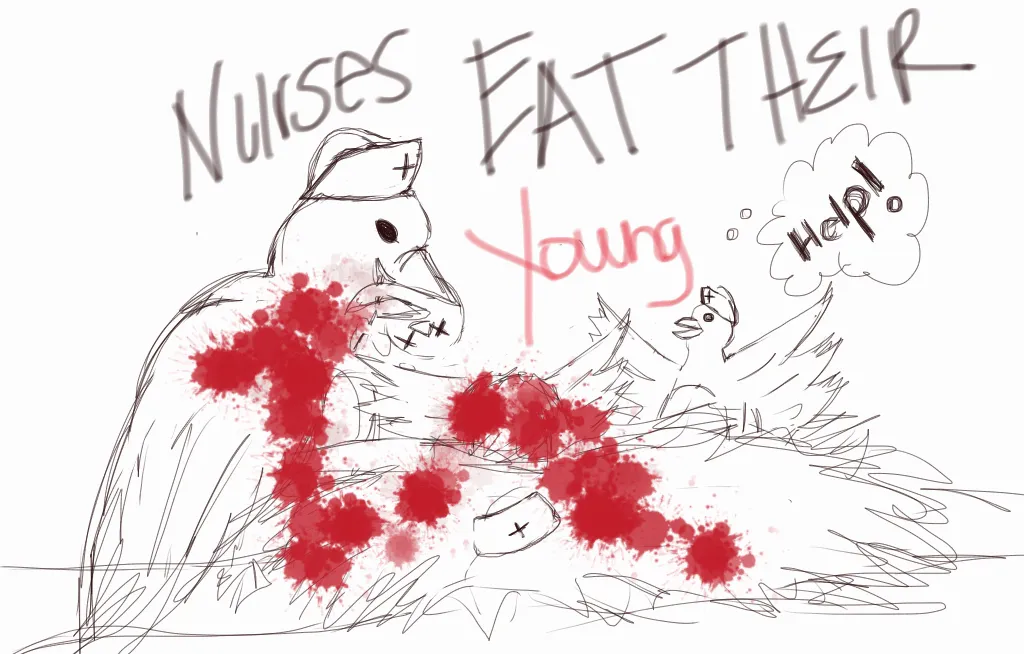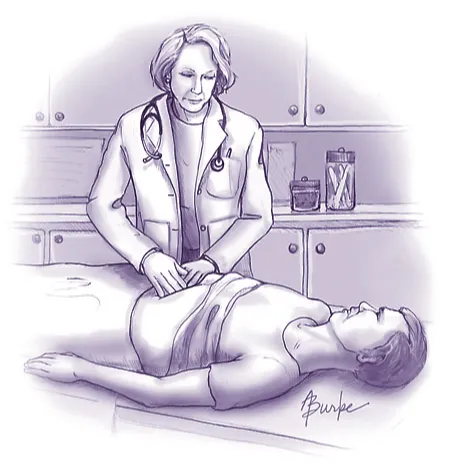Treatment Journal of Nursing

Crohn's Disease
Tags: Chron's disease patient symptoms treatment
The paper includes the identification, etiology, diagnosis, and treatment of Crohn's disease. The paper also addresses nutrition, diet, and nursing interventions and education to help manage the disease.
Read More →
A nursing-driven approach towards reducing hypertension: a focus on evening dosing and circadian rhythm
Tags: Antihypertensives blood blood pressure Chronotherapy hypertension hypertensive medication treatment
There are increasing data supporting evening administration as a means of achieving better BP control through re-establishing normal sleeping dipping patterns, thereby preventing the development of comorbidities. Additionally, this dosing change has been shown to prevent the morning surge, a precursor to negative cardiovascular (CV) events, including heart attack and stroke. When the costs are high both fiscally and medically, simple and cost-free interventions should be the first-line treatments.
Read More →
Sickle Cell Disease
Tags: abdominal pain child children disease pain Sickle Cell Disease treatment
Sickle cell disease is a debilitating condition secondary to the severe pain patients with this condition suffer especially when they are in crisis. This article includes the management and treatment of sickle cell disease and the diagnosis.
Read More →
Case Study: A Systematic Approach to Early Recognition and Treatment of Sepsis
Tags: assessment Case Study emergency department guidelines mortality prevention risk factors sepsis standard of care treatment
The term sepsis is often misunderstood. The public and often healthcare workers are unaware of the severity and high mortality rates this infection process has upon the world. Sepsis has vague symptoms that make diagnosis difficult. Often, sepsis is diagnosed in the later stages, when more obvious yet severe symptoms occur. This case study discusses a female who presents to the emergency department with sepsis secondary to pneumonia. Over the course of three days, the patient’s health quickly deteriorates, demonstrating the rapid progression of sepsis. Clinical findings, such as vitals signs, lab abnormalities, and symptoms of sepsis are discussed. The term bundle of care is presented to educate the reader on the golden standard of care for treatment of sepsis. This case study intends to increase community awareness and education to health care providers as well as providing an evidenced-based treatment guideline. More education and raised awareness will help prevent a deadly yet treatable infectious process.
Read More →
Ethical Issues Raised When Parents Refuse Medical Treatment For their Ill Children
Tags: child children ethical principles ethical principles in nursing ethical standards ethical values ethics nursing ethics parents treatment treatment options
Working as a nurse, I am seeing ethical issues raises when parents refuse medical treatment for their ill children. Health care providers need rapid access to legal remedies in order to help children whose parents neglect medical treatment for their young because of their religious beliefs and hopes that a miracle might heal the kids. Despite those parents, who strongly stand by their point of view about spiritual treatment, doctors and state continue considering such point of view as futile, neglect, and abuse of the children. According to the doctors and courts, the medical treatment in ill children is more effective to cure disease in comparison to the spiritual means. As a society, we should make it a priority to protect children from parental neglect and abuse in case of withholding medical treatment, which in many cases leads to death.
Read More →
Mystery Diagnosis: Recognizing Serotonin Syndrome
Tags: advanced practice hunter serotonin toxicity criteria recognition serotonin syndrome serotonin toxicity treatment
Serotonin syndrome (SS) is a rare condition that is believed to be induced by ingestion of serotonergic medications, leading to an increased serotonin level. Although many medications are thought to be responsible, some of the more common are antidepressants and opioids. There are no definitive tests to confirm SS, therefore diagnosis is based on clinical findings and can be somewhat difficult. A triad of symptoms, neuromuscular hyperactivity, altered mental status, and autonomic hyperactivity, are considered the hallmark signs, but are not present in all cases. Symptoms can vary from mild and almost undetectable to severe and life threatening. Three diagnostic systems are currently utilized to assist with diagnosis if SS is suspected: the Hunter, Sternbach, and Radomski criteria. A diagnosis of SS should prompt discontinuation of the suspected offending agent. Increased awareness of this issue is needed, including symptoms and risk factors, so that the advanced practice registered nurse (APRN) may promptly recognize and diagnosis this condition to avoid further complications. Completing a thorough history and physical, along with accurate medication reconciliation can assist the APRN in identifying high risk patients. While there is still so much about SS that remains unknown, current information and education on this issue will ensure the APRN is providing safe and high-quality care. Databases utilized were CINAHL, PubMed, and ScienceDirect. These databases provide access to numerous nursing, biomedical, and scientific journals and were useful in locating up-to-date, peer reviewed research on this subject.
Read More →
A Nursing Intervention to Enhance Wellness and Patient Adherence to Therapy for Headache - NEWPATH Study
Tags: Chronic Disease Self-Management headache Migraine Nursing Initiative patient adherence study therapy treatment wellness
The objective of the study is to ascertain whether the implementation of a nurse-initiated phone call between initial and follow up Headache appointments has the potential to enhance wellness and treatment plan adherence by reducing common barriers experienced by patients with Headache.
Read More →
Cardiomyopathy: A Closer Look at the Disease
Tags: cardiac arrest cardiomyopathy disease heart disease treatment
Heart disease is a wide term used for a variety of diseases that affect the heart. Heart disease is the leading cause of death in the United States. Cardiomyopathy is one of the types of heart disease that affects about 50,000 Americans annually. There are four types of cardiomyopathy: dilated, hypertrophic, restrictive, and arrhythmogenic right ventricular dysplasia (National Heart Lung and Blood Institute, 2007). This article will detail the different types of cardiomyopathy as well as the causes, treatment, sign and symptoms, diagnostic procedures and prevention. It will also cover ways to live with cardiomyopathy and end of life care.
Read More →
Rapid Response Team to the Rescue
Tags: Ambulance cardiac Doctors EMS Follow-Ups patient patient safety Rapid Response rapid response team rapid response team benefits Rescue Rescue Team RRT RRT Nurse RRT Nursing Team treatment working together
Rapid response team (RRT) purpose is to initiate immediate measures before patient deteriorates further and to educate the staff on activating the staff the Rapid response team.
Read More →
Treatment of Subarachnoid Hemorrhage
Tags: hemorrhage subarachnoid Subarachnoid Hemorrhage treatment
Overview and treatment of subarachnoid hemorrhage
Read More →
I Will Not Die But Live!
Tags: advanced practice advice advocacy advocate bullying child culture depression emergency emergency department Emergency nurse Emergency Nurses heart attack investigation love medication mental health patient safety stress treatment Whistleblowers work environment wound care
Since leaving nursing in 2008 I have wanted to write about my experiences as an emergency nurse and what happened to me as a whistleblower. This is my story.
Read More →
Practicing Holistic Nursing as Intensive Case Management
Tags: advanced practice aging behavior Case Study emergency room Health Promotion holistic nursing methods mental health Mental Illness professional rn Psychiatry requirements treatment
Case study describing management of mentally ill client using holistic nursing methods.
Read More →
Tourette's Syndrome: Implications for a Moving Disorder
Tags: Psychiatry Tourettes Syndrome treatment
This article highlights the subjective, objective and recommended nursing treatment for Tourette's syndrome.
Read More →
Charles Bonnet Syndrome: What Nurses Need to Know
Tags: Case Study Charles Bonnet Syndrome Guidance for Clinicians Hallucinations treatment Visual Hallucinations
Charles Bonnet Syndrome is frequently the appearance of visual hallucinations in psychologically intact people. Studies estimate the prevalence of these hallucinations of at least 10% of the elderly with vision impaired by, for example, macular degeneration or glaucoma. The syndrome is frequently undiagnosed or misdiagnosed. This case study shows how a patient's symptoms were misinterpreted causing unnecessary stress to the family.
Read More →
Therapeutic Hypothermia Management
Tags: cardiac cerebral ischemia critical care hemorrhage Hypothermia perioperative recommendations Subarachnoid Hemorrhage Therapeutic Hypothermia therapy traumatic brain injury treatment
The leading cause of death in North America is heart disease, resulting in 611,105 deaths in the last year. Cardiac arrest accounts for more than 300,000 heart disease related deaths. Patients that receive early quality chest compressions and defibrillation present with increased survival rate, however, the degree of brain dysfunction varies. The advancement in cardiopulmonary resuscitation after cardiac arrest and the use of therapeutic hypothermia have minimized brain injury and improved neurologic outcome. In 2002, two studies demonstrated the use of therapeutic hypothermia after cardiac arrest proving to lower mortality rate and have neuroprotective effect. This led the American Heart Association and the International Liaison Committee on Resuscitation to recommend the implementation of therapeutic hypothermia after the return of spontaneous circulation post-cardiac arrest. Mild hypothermia is also utilized in traumatic brain injury to control cerebral edema and to decrease intracranial pressure (ICP), cerebral ischemia, and subarachnoid hemorrhage (SAH). However, clinical effectiveness for subarachnoid hemorrhage is still questionable. This paper will focus on the recommendations for therapeutic hypothermia after cardiac arrest as well as a briefly discuss its use for clinical trials in traumatic brain injury, cerebral ischemia, and SAH.
Read More →
Barriers to Patients Undergoing Methadone Maintenance Therapy
Tags: addiction mental health methadone opiates therapy treatment treatment options
Methadone maintenance therapy is one method utilized to combat opioid addiction and is an effective treatment in the abstinence from opiates. The purpose of this article is to communicate comprehensive information to healthcare providers about methadone as a medication, and the treatment guidelines of maintenance programs in the hopes of diminishing the stigma attached to methadone maintenance therapy. Through a comprehensive literature review, information regarding mechanism of action, maintenance therapy program guidelines, different barriers to treatment, and how to overcome these barriers were collected and reviewed.
Read More →
Understanding and Treating Benzodiazepine Dependence; How you as a nurse can best assist the addicted patient
Tags: addiction benzodiazepine emergency emergency room mental health treatment
This article provides information on the symptoms of benzodiazepine dependence, the neurophysiology behind the dependence and how the staff nurse can be part of the treatment involved.
Read More →
Going Against the Norm: Treating Cancer as a Metabolic Disease
Tags: aging cancer cancer patients cancer risk chemotherapy metabolic metabolic disease oncology preventing cancer therapy treatment treatment options
The current treatment for someone diagnosed with cancer is no longer acceptable. The focus needs to shift away from our standard treatments which so often causes pain as well as physical and emotional suffering. Emerging research about the body’s cellular metabolism provides new hope for cancer prevention and treatment. A number of mechanisms present in the human body are known to inhibit cancer cell growth by providing the body with an alternative fuel source, one that cancer cells cannot metabolize. For instance, induced ketosis offers a physiological means of regulating glucose metabolism in cancer patients while suppressing tumor metabolism and progression while ketone production significantly produces anti-cancer effects by shifting the body’s fuel source from a glucose dependency to one that is ketone based. Even while there remains controversy over the occurrence of many types of cancer, recent research has unveiled promising results towards cancer prevention and treatment. Emerging evidence indicates cancer is primarily a metabolic disease. According to Dana-Farber Cancer Institute (2014) research is being done to look at the connection between body weight, sugar intake, insulin levels and their correlation to cancer. Understanding the cellular metabolism of cancer is necessary in order to find preventative and holistic treatment modalities and for this to occur, a paradoxical shift in our current perception of cancer treatment is necessary.
Read More →
Alternative Treatments: Doubting Thomas to Believer
Tags: alternatives treatment treatment center
My experience with reiki therapy and how it forever changed my practice.
Read More →
Poor sleep, hazardous breathing: An overview of obstructive sleep apnea
Tags: cessation Hallucinations obstructive sleep apnea sleep apnea sleep-disordered breathing therapy treatment treatment options
Obstructive sleep apnea is a chronic disorder resulting from upper airway collapse during sleep. It is linked to a variety of health and safety risks but can often be effectively treated. This article provides an overview of the disorder, including an evidence-based approach to diagnosis and management.
Read More →
Predicting exercise adherence in cancer patients and survivors: a systematic review and meta-analysis of motivational and behavioural factors
Tags: adherence behavior cancer cancer patients chemotherapy exercise meta-analysis physical activity recruiting review treatment
Cancer patients are advised to participate in daily exercise. Whether they comply with the recommendations for physical activity or not remains unclear. The review identified that both the TPB and the TTM frameworks include aspects that predicts exercise adherence in cancer patients, and thus contributes to the understanding of motivational factors of change in exercise behaviour in cancer populations. However, the strengths of predictions were relatively weak. More research is needed to identify predictors of greater importance.
Read More →
The Management of Crohn's Disease in Adults and Young People
Tags: abdominal pain adults best practice children Chron's clinical Crohn's disease disease treatment treatment options Young People
The guideline offers best practice advice on the care of adults, children and young people with Crohn's disease. These are the first evidence-based clinical and cost-effectiveness guidelines for Crohn's disease in the United Kingdom.
Read More →
Distress and Depression Among Bone and Marrow Transplant Patients
Tags: BMT cancer patients chemotherapy depression distress patient care stress therapy treatment
Bone and Marrow Transplant (BMT) is a five step treatment process: screening, collecting, conditioning, infusion, and engraftment. Bone and marrow transplant treatment is very aggressive that creates significant physical, social, psychological, and emotional stress. During the treatment process, many BMT recipients experience and display a wide array of psychosocial disorders including distress, anxiety, and depression. The way an individual experiences and copes with the distress, anxiety, and depression contributes to the physiological, psychological, and psychosocial outcomes of BMT treatment.
Read More →
Lung Cancer: A Case Study
Tags: cancer chemotherapy death end of life therapy treatment
Lung cancer is the number one cause of cancer-related death in men and the second most common in women. Lung cancer is responsible for 1.3 million deaths worldwide annually.
Read More →
The Healing Impact of Palliative Care Gerontology
Tags: comfort end-of-life care euthanasia palliative philosophy treatment
Palliative care is a philosophy and treatment to give an improved quality of life to those near the end of life and those with life-limiting conditions.
Read More →
Risperdal and Autism
Tags: autism autism spectrum disorder child treatment
Autism is a developmental disorder in children and continues through adulthood. Currently, there is no known cause or cure for autism. The Food and Drug Administration (FDA) approved the use of Risperdal for the treatment of aggressive behavior in autistic patients ages 5-16 years old.
Read More →Get Published for Free
Browse by Tag
advocate aging anesthesia behavior cardiac care Case Study child children clinical compassion COVID-19 critical care death diabetes disease education emergency department end of life ethical principles ethics future of nursing health health care ICU leadership medication mental health nurse Nurse Education nursing nursing education nursing ethics nursing faculty nursing school nursing students PACU patient care patient outcomes pediatric poem profession risk factors stress student nurse students teaching technology therapy treatment
Most Popular Last Month
More from RN Journal
The Blessing: A Nurse's Story
Ethical Issues Raised When Parents Refuse Medical Treatment For their Ill Children
Weighing In On a Decade-old Subject
Can I Depend On You?
How Concept Maps Facilitate Learning in Nursing Education
My Nursing Career A Whole New Appreciation
The Management of Crohn's Disease in Adults and Young People
Culturally Competent Nursing in Homecare
Alzheimer's Disease









